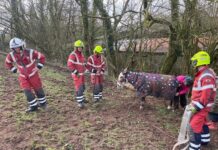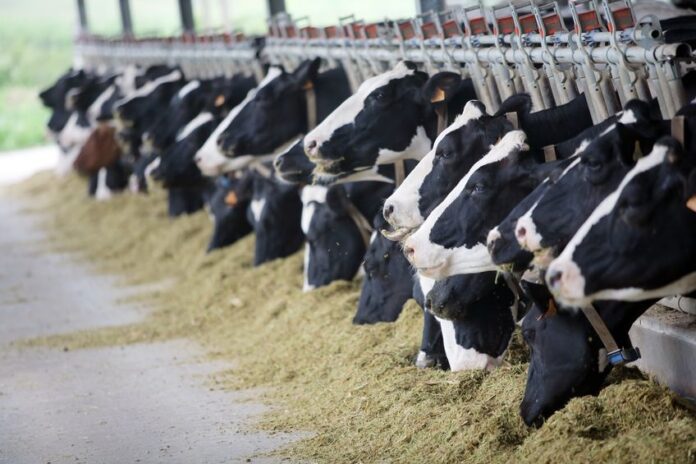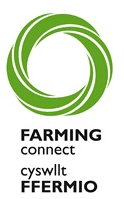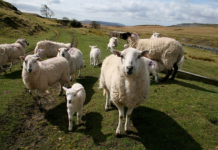Many Welsh dairy farms will need to increase production efficiency to reduce their carbon footprint and meet market and policy-driven emissions targets.
During a recent Farming Connect webinar, agricultural consultant Diane Spence advised farmers that agriculture was responsible for 14% of all emissions in Wales, with around 27% of these coming from the dairy sector.
Although this is lower than the 29% emitted by the energy supply industry, the 22% by business and the 16% from transport, farmers participating in a recent Farming Connect webinar on carbon footprinting were advised that it is important to take steps to reduce that level if agreed industry targets are to be met.
The carbon footprint of a product relates to the total sum of greenhouse gases it releases during its full life cycle; these include methane, nitrous oxide and carbon dioxide.
Enteric methane emissions are the single largest source of direct greenhouse gas emissions (GHG) in ruminants – but nitrous oxide emissions (mainly linked to nitrogen in purchased fertilisers and manures) are also important. Unlike nitrous oxide and carbon dioxide, methane is a dynamic gas that remains in the atmosphere for 10-12 years.
Diane told the webinar that the efficient use of inputs in relation to outputs produced is the key to reducing the carbon footprint, and this is closely linked to the overall technical performance of an enterprise.
There are five key areas that are relevant to all dairy farm types – from extensive grazing to full housed systems – in terms of reducing their carbon footprint:
Feed and protein efficiency
There areinterventions, such as ration formulation and silage analysis tools, for improving this.
Diane advised that farmers should consider alternatives to soyabean meal (which is imported from tropical countries like Brazil and Argentina, and is synonymous with deforestation and high greenhouse gas emissions), such as rapeseed meal – and also the role of by-products such as brewers’ grains and sugar beet pulp in the ration.
Animal health and genetics
Fertility, age at first calving and mortality are important.
Diane recommended that farmers use their herd health plan to monitor performance. This should include identifying the cow mortality rate for the last 12 months, establishing three focus areas and setting realistic goals for improvement. “It’s about having healthy cows,” she said.
Efficient use of inorganic fertilisers and nutrients in manure, in particular nitrogen
Nitrous oxide emissions arise from the production and application of mineral fertiliser, as well as from slurry and farmyard manure (FYM) during storage and application.
Optimising the amount of purchased nitrogen applied, and improving utilisation, storage and application of manure have a significant effect on the carbon footprint. It is important to maintain a nutrient management plan and to test soils regularly to assess the nutrient and demand.
Applying FYM when grass is actively growing in spring and early summer improves efficiency of nutrient uptake; it also reduces emissions and consequential environmental issues such as run-off and leaching, which are a particular issue when applied during wet conditions.
Covering manure storage also reduces nitrous oxide emissions, and helps to improve nutrient utilisation rates.
Land use
Forage represents a significant part of the diet on Welsh dairy farms; therefore it is important to optimise grassland productivity.
To ensure good quality swards and to reduce their farm’s carbon footprint, farmers should consider avoiding tillage, maintaining swards without reseeding by using oversowing or minimal cultivations, or aim to maintain long leys.
“They should encourage greater contribution of legumes and consider incorporating deep-rooting species, for example, plantain,” said Diane.
Sequestration
Locking up greenhouse gases is important too; this is directly correlated to the health of the soil. Soils that are not compacted and in good health will sequester more carbon.
“This is all good for grassland performance, too,” Diane pointed out.
Agriculture is uniquely placed for sequestering carbon, as it has the land and the ability to do this.
Diane urged farmers to take advantage of support available through Farming Connect for soil testing, forage analysis and advice about grassland management and ration formulation.
Around 60 tools have been developed for calculating a farm’s carbon footprint. However, there are three free tools that are available and are the most commonly used: the Farm Carbon Toolkit, the Cool Farm Tool and SAC Agrecalc.
When choosing which tool to use, it is important to select one and stick with it, for follow-up footprinting after changes have been implemented.
For groups of farmers registered with Farming Connect, 100% funding is available for calculating the carbon footprint of their businesses.
Farming Connect is delivered by Menter a Busnes and Lantra Wales and funded by the Welsh Government and the European Agricultural Fund for Rural Development.
Help keep news FREE for our readers
Supporting your local community newspaper/online news outlet is crucial now more than ever. If you believe in independent journalism, then consider making a valuable contribution by making a one-time or monthly donation. We operate in rural areas where providing unbiased news can be challenging. Read More About Supporting The West Wales Chronicle


























